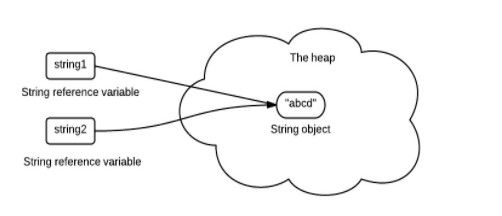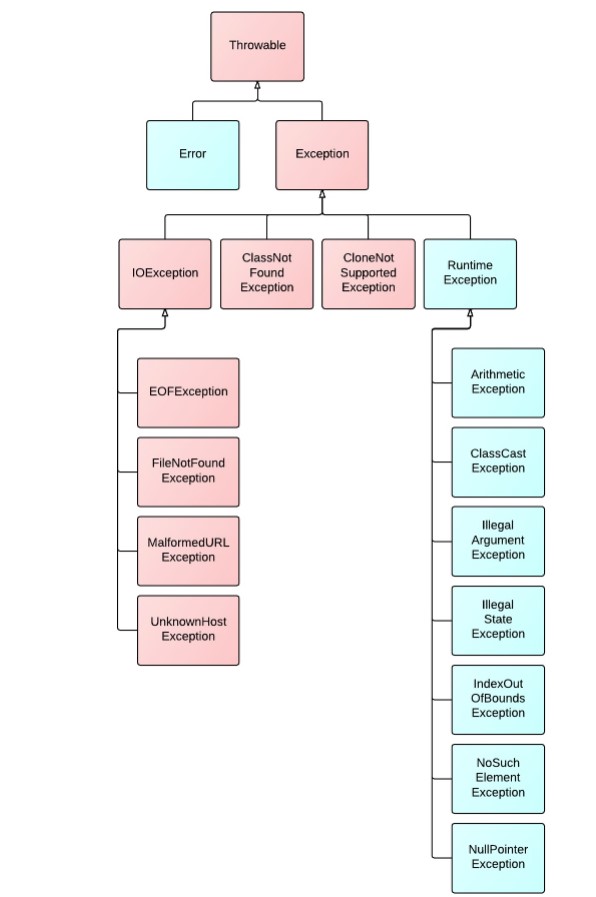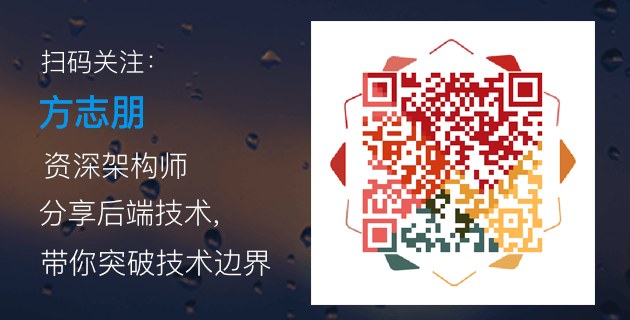一、关键字
final
1. 数据
声明数据为常量,可以是编译时常量,也可以是在运行时被初始化后不能被改变的常量。
- 对于基本类型,final 使数值不变;
- 对于引用类型,final 使引用不变,也就不能引用其它对象,但是被引用的对象本身是可以修改的。
final int x = 1;
x = 2; // cannot assign value to final variable 'x'
final A y = new A();
y.a = 1;
2. 方法
声明方法不能被子类覆盖。
private 方法隐式地被指定为 final,如果在子类中定义的方法和基类中的一个 private 方法签名相同,此时子类的方法不是覆盖基类方法,而是重载了。
3. 类
声明类不允许被继承。
static
1. 静态变量
静态变量在内存中只存在一份,只在类第一次实例化时初始化一次。
- 静态变量:类所有的实例都共享静态变量,可以直接通过类名来访问它;
- 实例变量:每创建一个实例就会产生一个实例变量,它与该实例同生共死。
public class A {
private int x; // 实例变量
public static int y; // 静态变量
}
2. 静态方法
静态方法在类加载的时候就存在了,它不依赖于任何实例,所以 static 方法必须实现,也就是说它不能是抽象方法(abstract)。
3. 静态语句块
静态语句块和静态变量一样在类第一次实例化时运行一次。
4. 初始化顺序
静态数据优先于其它数据的初始化,静态变量和静态语句块哪个先运行取决于它们在代码中的顺序。
public static String staticField = "静态变量";
static {
System.out.println("静态语句块");
}
实例变量和普通语句块的初始化在静态变量和静态语句块初始化结束之后。
public String field = "实例变量";
{
System.out.println("普通语句块");
}
最后才是构造函数中的数据进行初始化
public InitialOrderTest() {
System.out.println("构造函数");
}
存在继承的情况下,初始化顺序为:
- 父类(静态变量、静态语句块块)
- 子类(静态变量、静态语句块)
- 父类(实例变量、普通语句块)
- 父类(构造函数)
- 子类(实例变量、普通语句块)
- 子类(构造函数)
二、Object 通用方法
概览
public final native Class<?> getClass()
public native int hashCode()
public boolean equals(Object obj)
protected native Object clone() throws CloneNotSupportedException
public String toString()
public final native void notify()
public final native void notifyAll()
public final native void wait(long timeout) throws InterruptedException
public final void wait(long timeout, int nanos) throws InterruptedException
public final void wait() throws InterruptedException
protected void finalize() throws Throwable {}
clone()
1. cloneable
clone() 是 Object 的受保护方法,这意味着,如果一个类不显式去重载 clone() 就没有这个方法。
public class CloneTest {
private int a;
private int b;
}
CloneTest x = new CloneTest();
CloneTest y = x.clone(); // 'clone()' has protected access in 'java.lang.Object'
接下来重载 Object 的 clone() 得到以下实现:
public class CloneTest{
private int a;
private int b;
@Override
protected Object clone() throws CloneNotSupportedException {
return super.clone();
}
}
CloneTest x = new CloneTest();
try {
CloneTest y = (CloneTest) x.clone();
} catch (CloneNotSupportedException e) {
e.printStackTrace();
}
java.lang.CloneNotSupportedException: CloneTest
以上抛出了 CloneNotSupportedException,这是因为 CloneTest 没有实现 Cloneable 接口。应该注意的是,clone() 方法并不是 Cloneable 接口的方法,而是 Object 的一个 protected 方法。Cloneable 接口只是规定,如果一个类没有实现 Cloneable 接口又调用了 clone() 方法,就会抛出 CloneNotSupportedException。
2. 深拷贝与浅拷贝

- 浅拷贝:拷贝对象和原对象的引用类型引用同一个对象;
- 深拷贝:引用不同对象。
实现深拷贝的方法:
equals()
1. == 与 equals() 区别
- 对于基本类型,== 判断两个值是否相等,基本类型没有 equals() 方法。
- 对于引用类型,== 判断两个引用是否引用同一个对象,而 equals() 判断引用的对象是否等价。
2. 等价性
四、继承
访问权限
Java 中有三个访问权限修饰符:private、protected 以及 public,如果不加访问修饰符,表示包级可见。
可以对类或类中的成员(字段以及方法)加上访问修饰符。
- 成员可见表示其它类可该类的对象访问到该成员;
- 类可见表示其它类可以用这个类创建对象。
在理解类的可见性时,可以把类当做包中的一个成员,然后包表示一个类,那么就可以类比成员的可见性。
protected 用于修饰成员,表示在继承体系中成员对于子类可见。但是这个访问修饰符对于类没有意义,因为包没有继承体系。
抽象类与接口
1. 抽象类
抽象类和抽象方法都使用 abstract 进行声明。抽象类一般会包含抽象方法,抽象方法一定位于抽象类中。抽象类和普通类最大的区别是,抽象类不能被实例化,需要继承抽象类才能实例化其子类。
public abstract class GenericServlet implements Servlet, ServletConfig, Serializable {
// abstract method
abstract void service(ServletRequest req, ServletResponse res);
void init() {
// Its implementation
}
// other method related to Servlet
}
2. 接口
接口是抽象类的延伸。Java 为了安全性而不支持多重继承,一个类只能有一个父类。但是接口不同,一个类可以同时实现多个接口,不管这些接口之间有没有关系,所以接口弥补不支持多重继承的缺陷。
public interface Externalizable extends Serializable {
void writeExternal(ObjectOutput out) throws IOException;
void readExternal(ObjectInput in) throws IOException, ClassNotFoundException;
}
从 Java 8 开始,接口也可以拥有默认的方法实现,这是因为不支持默认方法的接口的维护成本太高了。在 Java 8 之前,如果一个接口想要添加新的方法,那么要修改所有实现了该接口的类。
public interface InterfaceDefaultTest {
default void func() {
System.out.println("default method in interface!");
}
}
3. 比较
- 从设计层面上看,抽象类提供了一种 IS-A 关系,那么就必须满足里式替换原则,即子类对象必须能够替换掉所有父类对象。而接口更像是一种 LIKE-A 关系,它只是提供一种方法实现契约,并不要求子类和父类具有 IS-A 关系;
- 从使用上来看,一个类可以实现多个接口,但是不能继承多个抽象类。
4. 使用选择
使用抽象类:
- 需要在几个相关的类中共享代码;
- 需要能控制继承来的方法和字段的访问权限,而不是都为 public。
- 需要继承非静态(non-static)和非常量(non-final)字段。
使用接口:
- 需要让不相关的类都实现一个方法,例如不相关的类都可以实现 Compareable 接口中的 compareTo() 方法;
- 需要使用多重继承。
super
1. 访问父类的成员
如果子类覆盖了父类的中某个方法的实现,可以通过使用 super 关键字来引用父类的方法实现。
public class Superclass {
public void printMethod() {
System.out.println("Printed in Superclass.");
}
}
public class Subclass extends Superclass {
// Overrides printMethod in Superclass
public void printMethod() {
super.printMethod();
System.out.println("Printed in Subclass");
}
public static void main(String[] args) {
Subclass s = new Subclass();
s.printMethod();
}
}
2. 访问父类的构造函数
可以使用 super() 函数访问父类的构造函数,从而完成一些初始化的工作。
public MountainBike(int startHeight, int startCadence, int startSpeed, int startGear) {
super(startCadence, startSpeed, startGear);
seatHeight = startHeight;
}
重载与重写
- 重写存在于继承体系中,指子类实现了一个与父类在方法声明上完全相同的一个方法;
- 重载即存在于继承体系中,也存在于同一个类中,指一个方法与已经存在的方法或者父类的方法名称上相同,但是参数类型、个数、顺序至少有一个不同。应该注意的是,返回值不同,其它都相同不算是重载。
五、String
String, StringBuffer and StringBuilder
1. 是否可变
- String 不可变
- StringBuffer 和 StringBuilder 可变
2. 是否线程安全
- String 不可变,因此是线程安全的
- StringBuilder 不是线程安全的
- StringBuffer 是线程安全的,内部使用 synchronized 来同步
String 不可变的原因
1. 可以缓存 hash 值
因为 String 的 hash 值经常被使用,例如 String 用做 HashMap 等情况。不可变的特性可以使得 hash 值也不可变,因此只需要进行一次计算。
2. String Pool 的需要
如果一个 String 对象已经被创建过了,那么就会从 String Pool 中取得引用。只有 String 是不可变的,才可能使用 String Pool。

3. 安全性
String 经常作为参数,String 不可变性可以保证参数不可变。例如在作为网络连接参数的情况下如果 String 是可变的,那么在网络连接过程中,String 被改变,改变 String 对象的那一方以为现在连接的是其它主机,而实际情况却不一定是。
4. 线程安全
String 不可变性天生具备线程安全,可以在多个线程中使用。
String.intern()
使用 String.intern() 可以保证所有相同内容的字符串变量引用相同的内存对象。
六、基本类型与运算
包装类型
八个基本类型:boolean/1 byte/8 char/16 short/16 int/32 float/32 long/64 double/64
基本类型都有对应的包装类型,基本类型与其对应的包装类型之间的赋值使用自动装箱与拆箱完成。
Integer x = 2; // 装箱
int y = x; // 拆箱
new Integer(123) 与 Integer.valueOf(123) 的区别在于,Integer.valueOf(123) 可能会使用缓存对象,因此多次使用 Integer.valueOf(123) 会取得同一个对象的引用。
public static void main(String[] args) {
Integer a = new Integer(1);
Integer b = new Integer(1);
System.out.println("a==b? " + (a == b));
Integer c = Integer.valueOf(1);
Integer d = Integer.valueOf(1);
System.out.println("c==d? " + (c == d));
}
a==b? false
c==d? true
valueOf() 方法的实现比较简单,就是先判断值是否在缓存池中,如果在的话就直接使用缓存池的内容。
public static Integer valueOf(int i) {
final int offset = 128;
if (i >= -128 && i <= 127) {
return IntegerCache.cache[i + offset];
}
return new Integer(i);
}
基本类型中可以使用缓存池的值如下:
- boolean values true and false
- all byte values
- short values between -128 and 127
- int values between -128 and 127
- char in the range \u0000 to \u007F
自动装箱过程编译器会调用 valueOf() 方法,因此多个 Integer 对象使用装箱来创建并且值相同,那么就会引用相同的对象。这样做很显然是为了节省内存开销。
Integer x = 1;
Integer y = 1;
System.out.println(c == d); // true
Differences between new Integer(123), Integer.valueOf(123) and just 123
switch
A switch works with the byte, short, char, and int primitive data types. It also works with enumerated types and a few special classes that “wrap” certain primitive types: Character, Byte, Short, and Integer.
In the JDK 7 release, you can use a String object in the expression of a switch statement.
switch 不支持 long,是因为 swicth 的设计初衷是为那些只需要对少数的几个值进行等值判断,如果值过于复杂,那么还是用 if 比较合适。
switch 使用查找表的方式来实现,JVM 中使用的指令是 lookupswitch。
public static void main(String... args) {
switch (1) {
case 1:
break;
case 2:
break;
}
}
public static void main(java.lang.String[]);
Code:
Stack=1, Locals=1, Args_size=1
0: iconst_1
1: lookupswitch{ //2
1: 28;
2: 31;
default: 31 }
28: goto 31
31: return
七、反射
每个类都有一个 Class 对象,包含了与类有关的信息。当编译一个新类时,会产生一个同名的 .class 文件,该文件内容保存着 Class 对象。
类加载相当于 Class 对象的加载。类在第一次使用时才动态加载到 JVM 中,可以使用 Class.forName(‘com.mysql.jdbc.Driver.class’) 这种方式来控制类的加载,该方法会返回一个 Class 对象。
反射可以提供运行时的类信息,并且这个类可以在运行时才加载进来,甚至在编译时期该类的 .class 不存在也可以加载进来。
Class 和 java.lang.reflect 一起对反射提供了支持,java.lang.reflect 类库主要包含了以下三个类:
- Field :可以使用 get() 和 set() 方法读取和修改 Field 对象关联的字段;
- Method :可以使用 invoke() 方法调用与 Method 对象关联的方法;
- Constructor :可以用 Constructor 创建新的对象。
IDE 使用反射机制获取类的信息,在使用一个类的对象时,能够把类的字段、方法和构造函数等信息列出来供用户选择。
Advantages of Using Reflection:
- Extensibility Features : An application may make use of external, user-defined classes by creating instances of extensibility objects using their fully-qualified names.
- Class Browsers and Visual Development Environments : A class browser needs to be able to enumerate the members of classes. Visual development environments can benefit from making use of type information available in reflection to aid the developer in writing correct code.
- Debuggers and Test Tools : Debuggers need to be able to examine private members on classes. Test harnesses can make use of reflection to systematically call a discoverable set APIs defined on a class, to insure a high level of code coverage in a test suite.
Drawbacks of Reflection:
Reflection is powerful, but should not be used indiscriminately. If it is possible to perform an operation without using reflection, then it is preferable to avoid using it. The following concerns should be kept in mind when accessing code via reflection.
- Performance Overhead : Because reflection involves types that are dynamically resolved, certain Java virtual machine optimizations can not be performed. Consequently, reflective operations have slower performance than their non-reflective counterparts, and should be avoided in sections of code which are called frequently in performance-sensitive applications.
- Security Restrictions : Reflection requires a runtime permission which may not be present when running under a security manager. This is in an important consideration for code which has to run in a restricted security context, such as in an Applet.
- Exposure of Internals :Since reflection allows code to perform operations that would be illegal in non-reflective code, such as accessing private fields and methods, the use of reflection can result in unexpected side-effects, which may render code dysfunctional and may destroy portability. Reflective code breaks abstractions and therefore may change behavior with upgrades of the platform.
八、异常
Throwable 可以用来表示任何可以作为异常抛出的类,分为两种: Error 和 Exception,其中 Error 用来表示编译时系统错误。
Exception 分为两种:
- 受检异常 :需要用 try…catch… 语句捕获并进行处理,并且可以从异常中恢复;
- 非受检异常 :是程序运行时错误,例如除 0 会引发 Arithmetic Exception,此时程序奔溃并且无法恢复。

九、泛型
public class Box<T> {
// T stands for "Type"
private T t;
public void set(T t) { this.t = t; }
public T get() { return t; }
}
十、注解
Java 注解是附加在代码中的一些元信息,用于一些工具在编译、运行时进行解析和使用,起到说明、配置的功能。注解不会也不能影响代码的实际逻辑,仅仅起到辅助性的作用。
十一、特性
面向对象三大特性
Java 各版本的新特性
New highlights in Java SE 8
- Lambda Expressions
- Pipelines and Streams
- Date and Time API
- Default Methods
- Type Annotations
- Nashhorn JavaScript Engine
- Concurrent Accumulators
- Parallel operations
- PermGen Error Removed
New highlights in Java SE 7
- Strings in Switch Statement
- Type Inference for Generic Instance Creation
- Multiple Exception Handling
- Support for Dynamic Languages
- Try with Resources
- Java nio Package
- Binary Literals, Underscore in literals
- Diamond Syntax
Java 与 C++ 的区别
Java 是纯粹的面向对象语言,所有的对象都继承自 java.lang.Object,C++ 为了兼容 C 即支持面向对象也支持面向过程。
| Java | C++ |
|---|---|
| Javadoesnotsupportpointers,templates,unions,operatoroverloading,structuresetc.TheJavalanguagepromotersinitiallysaid“Nopointers!”,butwhenmanyprogrammersquestionedhowyoucanworkwithoutpointers,thepromotersbegansaying“Restrictedpointers.”Javasupportswhatitcalls“references”.ReferencesactalotlikepointersinC++languagesbutyoucannotperformarithmeticonpointersinJava.Referenceshavetypes,andthey’retype-safe.Thesereferencescannotbeinterpretedasrawaddressandunsafeconversionisnotallowed. | C++supportsstructures,unions,templates,operatoroverloading,pointersandpointerarithmetic. |
| Javasupportautomaticgarbagecollection.ItdoesnotsupportdestructorsasC++does. | C++supportdestructors,whichisautomaticallyinvokedwhentheobjectisdestroyed. |
| Javadoesnotsupportconditionalcompilationandinclusion. | Conditionalinclusion(#ifdef#ifndeftype)isoneofthemainfeaturesofC++. |
| Javahasbuiltinsupportforthreads.InJava,thereisaThreadclassthatyouinherittocreateanewthreadandoverridetherun()method. | C++hasnobuiltinsupportforthreads.C++reliesonnon-standardthird-partylibrariesforthreadsupport. |
| Javadoesnotsupportdefaultarguments.Thereisnoscoperesolutionoperator(::)inJava.Themethoddefinitionsmustalwaysoccurwithinaclass,sothereisnoneedforscoperesolutionthereeither. | C++supportsdefaultarguments.C++hasscoperesolutionoperator(::)whichisusedtotodefineamethodoutsideaclassandtoaccessaglobalvariablewithinfromthescopewherealocalvariablealsoexistswiththesamename. |
| ThereisnogotostatementinJava.Thekeywordsconstandgotoarereserved,eventhoughtheyarenotused. | C++hasgotostatement.However,itisnotconsideredgoodpracticetouseofgotostatement. |
| Javadoesn’tprovidemultipleinheritance,atleastnotinthesamesensethatC++does. | C++doessupportmultipleinheritance.Thekeywordvirtualisusedtoresolveambiguitiesduringmultipleinheritanceifthereisany. |
| ExceptionhandlinginJavaisdifferentbecausetherearenodestructors.Also,inJava,try/catchmustbedefinedifthefunctiondeclaresthatitmaythrowanexception. | WhileinC++,youmaynotincludethetry/catchevenifthefunctionthrowsanexception. |
| Javahasmethodoverloading,butnooperatoroverloading.TheStringclassdoesusethe+and+=operatorstoconcatenatestringsandStringexpressionsuseautomatictypeconversion,butthat’saspecialbuilt-incase. | C++supportsbothmethodoverloadingandoperatoroverloading. |
| Javahasbuilt-insupportfordocumentationcomments(/*.../);therefore,Javasourcefilescancontaintheirowndocumentation,whichisreadbyaseparatetoolusuallyjavadocandreformattedintoHTML.Thishelpskeepingdocumentationmaintainedineasyway. | C++doesnotsupportdocumentationcomments. |
| Javaisinterpretedforthemostpartandhenceplatformindependent. | C++generatesobjectcodeandthesamecodemaynotrunondifferentplatforms. |
JRE or JDK
- JRE is the JVM program, Java application need to run on JRE.
- JDK is a superset of JRE, JRE + tools for developing java programs. e.g, it provides the compiler “javac”
参考资料
- Eckel B. Java 编程思想[M]. 机械工业出版社, 2002.
- Bloch J. Effective java[M]. Addison-Wesley Professional, 2017.
看完两件小事
如果你觉得这篇文章对你挺有启发,我想请你帮我两个小忙:
- 把这篇文章分享给你的朋友 / 交流群,让更多的人看到,一起进步,一起成长!
- 关注公众号 「方志朋」,公众号后台回复「资源」 免费领取我精心整理的前端进阶资源教程
